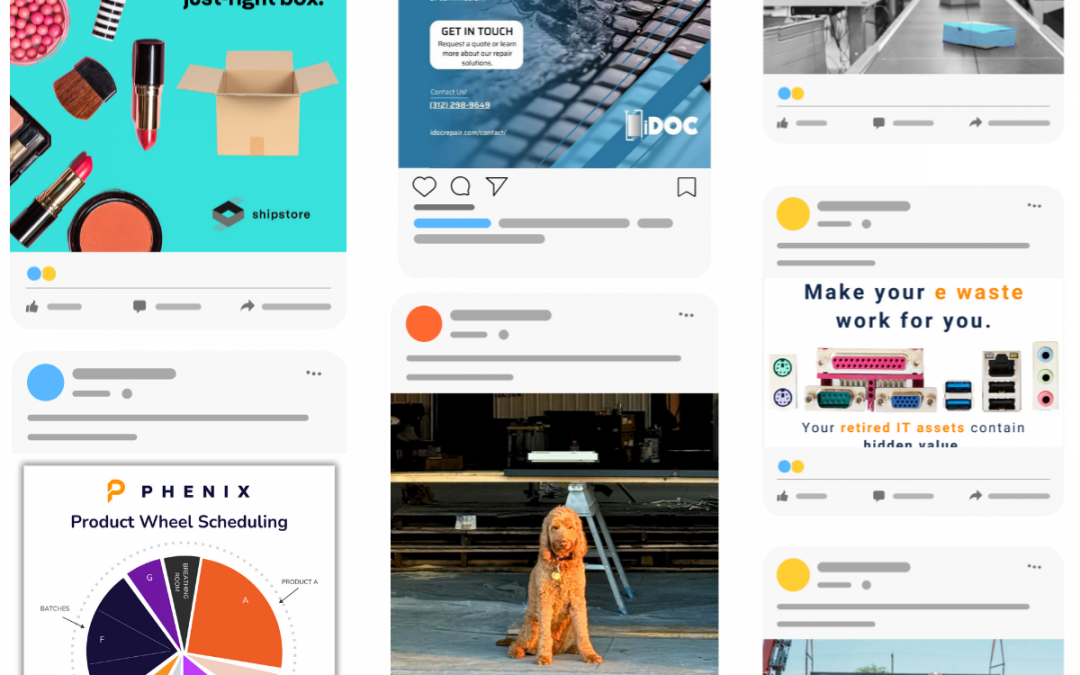
by Fronetics | Aug 18, 2015 | Blog, Leadership, Marketing, Social Media

In one of the most infamous social media gaffes, the insurance giant Aflac fired its widely-recognized spokesman Gilbert Godfrey after he tweeted insensitive comments about the Japanese tsunami in 2011. The rapid growth of social media has created a gray area for employers and employees alike in the space where personal and professional meet, to be certain. But, social media has also presented some of the greatest opportunities for marketing growth since the introduction of the internet. Even so, companies have been slow to relinquish control and absolute authority of their brands on social media. Those that have embraced employees as brand ambassadors, though, have seen mighty returns on their efforts.
A few years ago when Sodexo set out to transform the way it uses social media, no one could have foreseen how successful the initiative would eventually become. Through a series of intentional moves, the company empowered its employees to use social media to extend its brand. In short, Sodexo shifted its social media efforts from strictly marketing to the education and empowerment of employees. Its expanded marketing efforts engaged and mobilized its entire workforce as brand ambassadors. As an example, to find and attract top talent using existing employee connections, Sodexo crafted a targeted social strategy. The company identified employees who were frequent social media users with many connections and tasked them with social job sharing – in other words, employees were asked to use their personal social media accounts to advertise job openings to their collective social connections. In just three years, Sodexo grew their average job opening pageviews per month by over 1,100%.
So how can your company foster a similar online community of connected and engaged employees? To begin, listen and observe. Monitoring the activity of both your company’s social profiles and that of your employees will help you to understand how employees are currently using social media to interact with your brand. From there, you’ll be able to identify employees that are heavy users of social media and which employees are online community influencers. Note what topics and social networks drive the most engagement. Use this initial research to set benchmarks and goals for progress. After you’ve completed the review of your company’s social landscape, you’ll have a clear picture of where the greatest areas of opportunity lie and who to tap for help.
Successfully reframing your employees as brand ambassadors through an intentional social strategy requires creating a culture that empowers and incentivizes employee participation. It’s important to clearly articulate your company’s overall social strategy, but much more important to link its goals and objectives to employee job functions. Employees are much more likely to participate if what you’re asking them to do is seen as complementary, not supplementary to their workload. To encourage informed participation, provide training for your social media brand ambassadors. For example, you could invite a local college professor to present at an internal workshop outlining how to write content specifically for social media. Or, mine existing internal resources by tapping your communications department to lead an introductory corporate digital communications webinar for social brand ambassadors. Creating an informative and sustaining dialogue with your employees will be key in determining whether or not your efforts will be successful.
Once you’ve empowered your employees with the appropriate resources and knowledge, motivate them to participate online. Ask brand ambassadors to follow your company pages, promote company events or initiatives, and share company-posted content. Assign them as group moderators of online communities. Request their contribution as subject matter experts for blog posts. Whatever it is you decide to ask of them, it’s critically important that you regularly engage them. Companies that consistently treat employees as partners in social media by marrying the personal and professional growth of employees stand to gain significant benefits.
Back at Sodexo, a quick glance at the company’s social media profiles reveals a thriving online community driven by employee participation. The Sodexo Facebook page shows a wealth of employee comments and posts, links to employee blogs, and corporate posts highlighting employees. The company’s Twitter account is populated by dedicated hashtags for employees and tweets about employee participation in one of the company’s social initiatives. It’s clear Sodexo’s employees are enjoying the perks that come along with engaging online with their employer. Meanwhile, Sodexo itself is expanding brand awareness, enjoying improved internal communication, increasing sales, and attracting top talent – simply by empowering its own employees to become ambassadors of the brand.
by Jennifer Hart Yim | Sep 13, 2024
A SUPPLY CHAIN marketing agency Don’t waste time getting a general agency up to speed We’re a supply chain marketing agency focused solely on marketing for the supply chain industry. Get thoughtful, compelling campaigns created by a team who understands your...

by Elizabeth Hines | Sep 4, 2024
Supply chain marketing examples We turn bright ideas into powerful deliverables We don't just promise the moon to our supply chain clients — we deliver it. Peek behind the curtain at some of our work. Spoiler alert: We crushed it. Let's work together OUR WORK B2B...
by Fronetics | Aug 28, 2024
SUPPLY CHAIN MARKETING More leads. More business. Build brand authority and your sales pipeline Grow your supply chain business with a tailored B2B marketing strategy designed by an agency of industry experts. Here's what we do Our services Let’s grow your...

by Fronetics | Nov 14, 2019 | Blog, Marketing, Social Media
Whether you’re using social marketing or not, chances are your employees are active on social media platforms. Here’s why you need to create a social media policy.
Highlights:
- A social media policy is your business code of conduct, letting people in your organization know how to act on social media.
- Responses to negative comments should be met with patience, respect, and reflect the tone of the brand.
- Employees’ activity on social platforms promotes your business, driving brand awareness and increasing customer loyalty.
Social media can be a powerful tool that helps B2B companies connect with audiences and turn leads into customers. And most platforms give you the ability to track and analyze your performance, increasing your chance of success.
But social media can also have a reverse effect. When used carelessly, it can ruin your brand image, change the public perception of your business, and even lose you customers. Even if your business is not active on social networks, there’s a good chance your employees, and even vendors associated with your brand, are. One misstep by any of these people can have a negative impact on your bottom line.
This is why it’s more important than ever to have a documented social policy that your employees understand and adhere to.
What is a social media policy?
A social media policy is your business code of conduct, letting people in your organization know how to act on social media. It should be a dynamic document that provides guidelines that are easy to use and cover all aspects of social media — including your business and employees’ social pages (personal and professional).
Benefits of a social media policy
Has your company suffered from a social media crisis? Or have one of your employees posted images that don’t match your brand’s image? There are lots of reasons to have a documented social media policy, including:
- Maintaining your brand identity across social platforms
- Quickly responding to a social media crisis
- Straight-forward approach to employees’ personal social profiles
- Encouraging brand ambassadors among employees
4 tips to include in your social media policy
Having a document that outlines your expectations when it comes to social platforms takes the guesswork out of what’s appropriate (and what’s not) for your employees. Your policy should include:
1. Defined roles
Here are Fronetics, we have profiles on several social sites. It’s important to define who takes ownership of each of those accounts and how often they are expected to monitor them. Some companies check social networks daily, others on an as-needed basis.
Comments? Questions? Each engagement with your brand should be responded to in a timely manner. A documented social media policy helps define all these details, including posting frequency, advertising, social listening, and even analytics around how your social channels are performing.
2. Responses to PR issues
When small issues arise on social media — for example, a negative comment or poor customer experience — they can quickly escalate if not handled promptly and effectively. The most important part of responding to these types of situations is to remember that employees are representing their brand first and foremost. Responses to negative comments or unhappy customers should always be met with patience, respect, and reflect the tone of the brand.
An effective way to deal with PR issues and to ensure responses align with your corporate brand is to create a ‘cheat sheet’ of responses to frequent issues or concerns. Employees can check the approved response list to have answers ready to post or know who to contact internally to help de-escalate a situation.
3. Staying within the law
Though this seems fairly obvious, policies should follow state and federal laws. If you’re unsure of these laws, it’s best to seek legal advice to make sure your company is in compliance.
Sprout Social suggests also considering:
- Copyright isn’t a no-brainer, so it’s best to explain how to comply with copyright law on social media, especially when using third-party content.
- Privacy is key. Do all of your employees know how to handle customer information, for instance?
- Confidentiality refers to respecting your organization’s internal information. Whether you have your people sign non-disclosure agreements or not, they should be aware of the ramifications of disclosing information on social media that the organization considers private.
4. Personal account guidelines
Let’s face it: you can’t control everything your employees say on Facebook or any other social channel, but what they post does have an impact on your business. Outline basic guidelines for employees’ personal accounts that – at a minimum – create a level of respect for the company and other employees. These might include:
- No speaking negatively about the business or its staff
- No posting of harassing, hateful, or illegal content
Adidas, for example, has a document that specifically outlines the accepted behavior for employees’ online presence:
“You should also show proper consideration for others’ privacy and for topics that may be considered objectionable or inflammatory (like religion or politics) … we all appreciate respect.”
Final thoughts
A social media policy helps eliminate the “gray area” of your employees’ social profiles. Yes, your employees are active on social media sites. And yes, they are a direct reflection of your brand. By creating a social media policy that provides guidelines and expected behavior, you can feel confident in your employees’ online presence. You may even find that their activity on social platforms promotes your business, driving brand awareness and increasing customer loyalty.
Related posts:






